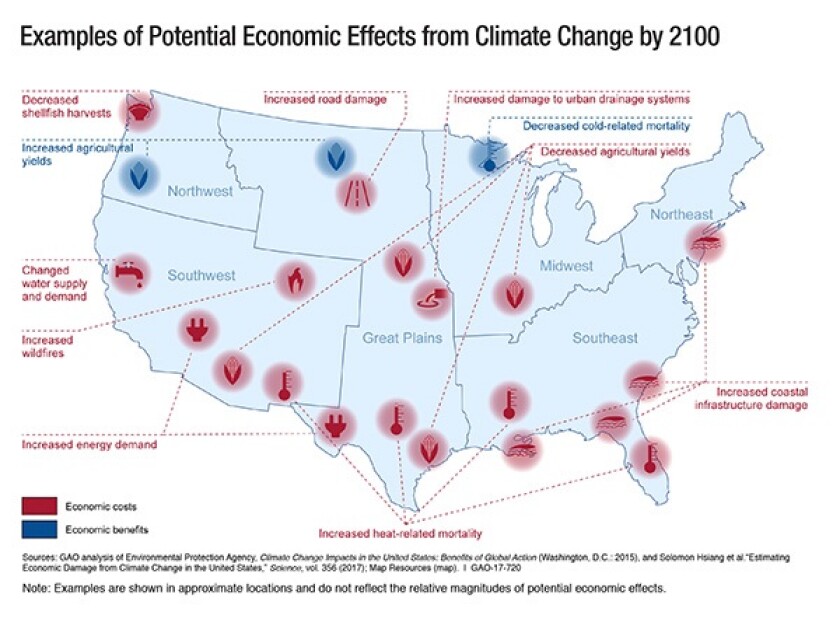Still, scientists and statisticians have continued to look for one. Most recently, a study published in June in the journal Science calculated the costs of climate change county by county. It linked climate projections with economic effects like mortality, labor productivity, energy demand and crop yields.
This past fall, the Government Accountability Office (GAO) weighed in with a report examining the potential economic impacts of climate change. The report reviewed two national studies and several smaller ones. Researchers also interviewed experts about the strengths and limitations of those reports. They concluded that the methods used produce imprecise results, mainly due to modeling and other limitations, such as the difficulty of predicting severe weather.
Nevertheless, the GAO researchers suggested that the studies can still provide insight into the economic effects of climate change across the country. They assembled a map (below) that shows these effects by regions to encourage decision-makers to identify significant climate risks as a first step toward managing them. “The impacts and costs of extreme events will increase in significance as what are considered rare events become more common and intense because of climate change,” the report says.










